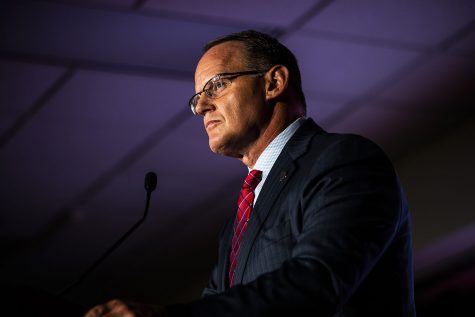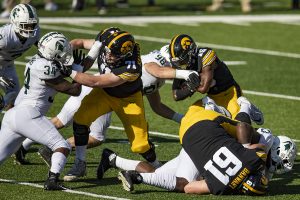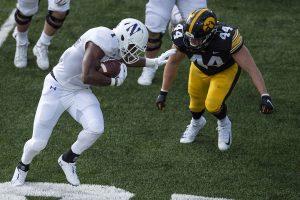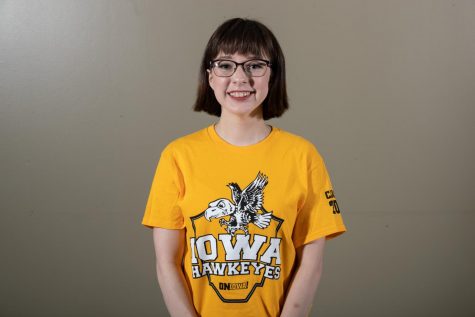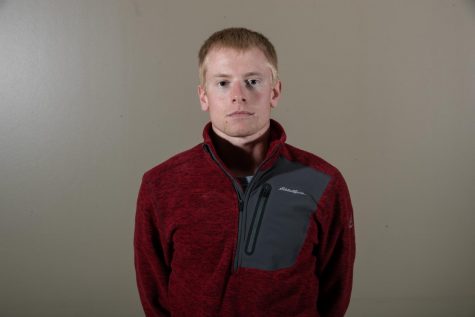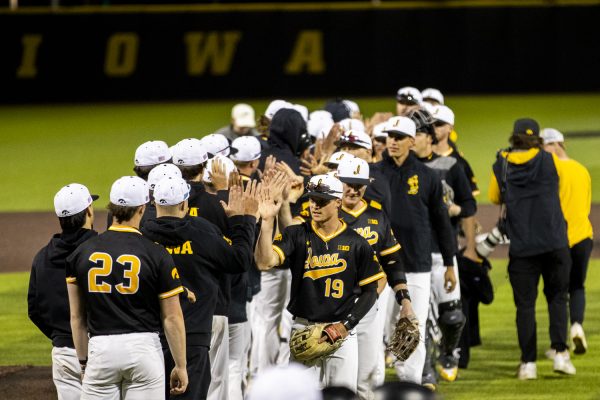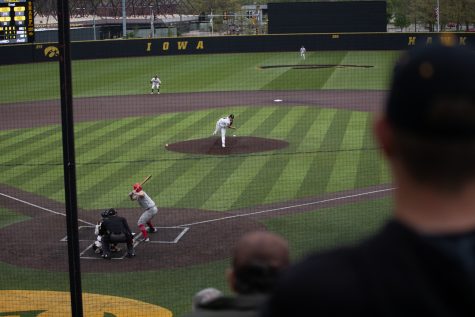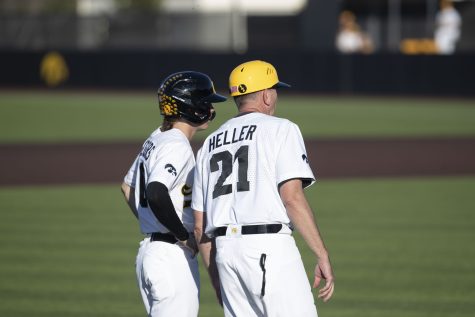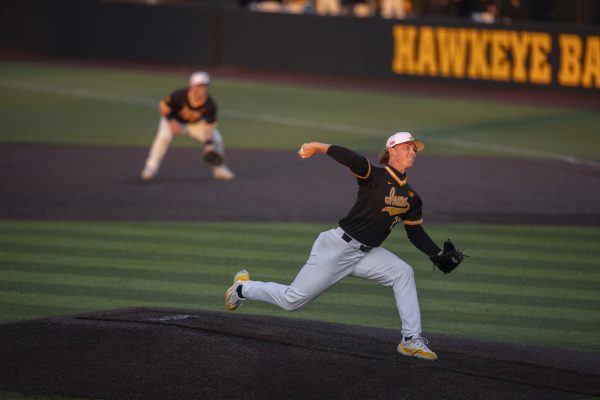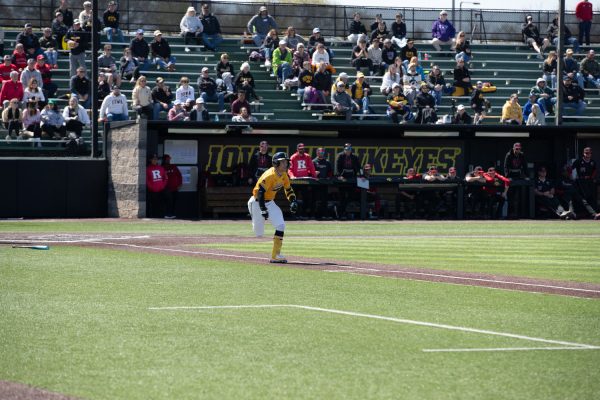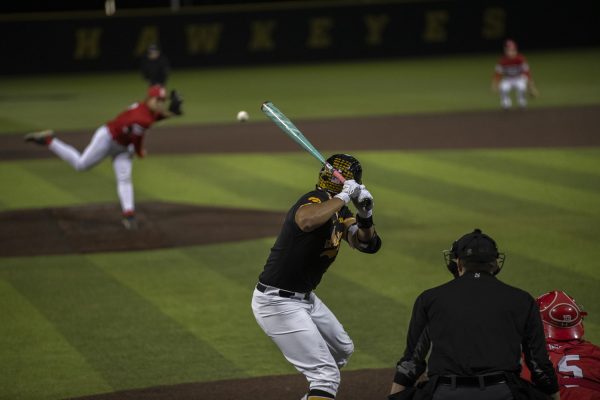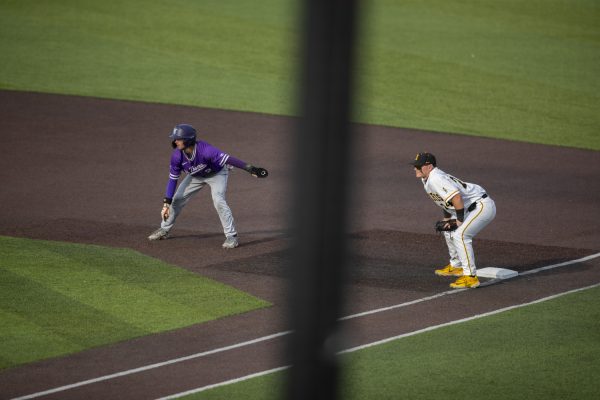Looking at Iowa baseball’s two-way players
Four Iowa players compete on the mound and at the plate.
Iowa infielder Dylan Nedved rounds the bases during a baseball game between the Iowa Hawkeyes and the Kansas Jayhawks on Tuesday, March 10, at Duane Banks Field. The Hawkeyes defeated the Jayhawks, 8-0.
November 17, 2020
Players that hit and pitch are considered out of the norm in Division I baseball with the difficulty level of success on both sides at such a high level of play.
But the Hawkeyes will be carrying four two-way players on their roster going into the 2021 spring season.
Juniors Dylan Nedved and Trenton Wallace, and Freshmen Alec Nigut and Keaton Anthony, will all spend time on the mound and in the batters’ box for Iowa this season.
“I love [hitting and pitching],” Anthony said. “I have just been doing them my whole life, so it would be rough to give one up. Right now, I am hoping to do both for as long as I can.”
While it’s not abnormal to see a team with at least one two-way player on their roster, they are not frequent by any means. The Big Ten had only 15 two-way players competing last year, and five out of its 13 teams did not have a two-way player on its roster.
The 2019 College World Series Champion Vanderbilt Commodores had one two-way player on their team, and the Michigan Wolverines that faced them had two.
RELATED: Iowa baseball heads into offseason workouts
Since the College Baseball Foundation began presenting the John Olerud Award to the nation’s top two-way player in 2010, eight of the 10 winners have been from the ACC or the SEC.
“In my time at Iowa so far, we have ran into a very small amount, so we are definitely on the scarce side,” Wallace said. “At Iowa we have a lot more than the norm.”
Wallace said Iowa is likely more open to recruiting two-way players because it allows them to have more arms and position players without taking up extra roster spots.
“I had some other schools that offered me, but they wanted me to do one or the other mostly,” Anthony said. “I just didn’t want to do that because I wanted to do both, so that was a big part of my recruiting process for [Iowa].”
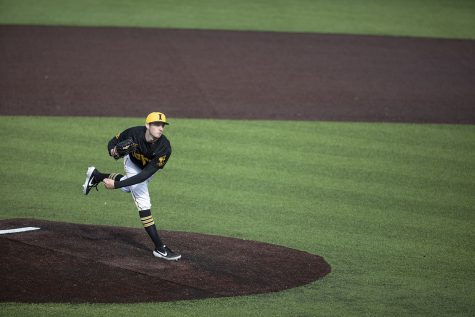
Iowa doesn’t take a one-size-fits-all approach to training for its two-way players. Nedved, who started 10 games as a position player and made five appearances on the mound for the Hawkeyes last year, will do full practices with the position players and will throw a bullpen once or twice a week.
Wallace and Anthony will spend more time with the pitchers doing their throwing programs and pitching on bullpen day, but will return with the position players during bunting and baserunning, defense, and hitting.
Protecting their arms from injury can be a larger task for these players, as they are adding on throws in the field to the already strenuous task of pitching.
“On the days that I am throwing a bullpen I will usually go full out, and it will be a high intent day,” Anthony said. “The days that I am in the field or the day after I just threw a bullpen, I will take it easy and either not throw at all or just throw lightly.”
The veteran two-way players were up to the task for Iowa last spring. Nedved had a .308 batting average with 11 RBIs and 10 runs scored while finishing with a 1.35 ERA and seven strikeouts through 6.2 innings on the mound. Wallace hit .529 in 17 at bats with five RBIs and one home run, along with a 1.59 ERA and 18 strikeouts in 11.1 innings pitched.






